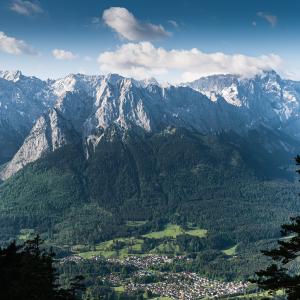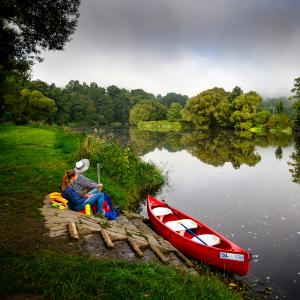Ludwig II went down in the history books as the fairy-tale king. He ascended the throne in 1864, at the age of only 18, and was, from then on, to guide the fortunes of Bavaria, which was a kingdom until 1918.
To the present day, there continue to be many stories about 'Kini', as King Ludwig II is still called in Bavaria today. The timid monarch, who admired the music of Richard Wagner, liked fancy dress and loved the theatre, is said to have fled more and more into a dream world. During his brief reign – he only lived to be 41 – he lost the war against Prussia, brought the territories into the German Empire in 1870/71, and lived in such an extravagant way that there was a threat of national bankruptcy. In 1886 Ludwig was declared insane by a panel of doctors, and shortly after that he drowned in the Starnberger See.
To escape reality, Ludwig aimed to have castles built that looked as if they had come straight out of a fairy tale. And he certainly succeeded! On a rugged rock up above Hohenschwangau near Füssen, his masterpiece sits enthroned: Neuschwanstein Castle. Seen from outside, with its many towers and oriels, it really resembles a castle of some mediaeval knight. On the inside of the building, which was never actually completed, with its 6,000 square metres of floor area, life was grandiose and extravagant – quite in accord with the tastes of the fairy-tale king. The highlights of the castle include gadgets which were very progressive for those times such as warm-air heating, toilets with automatic flushing, and a dumb waiter.
With Linderhof, the Rococo palace in the Ammergau Alps which was known as the 'Royal villa', and Herrenchiemsee, his costliest residence, which stands on an island in the Chiemsee, Ludwig had other magnificent edifices realised in Bavaria. All three of these castles can only be visited on guided tours. If your customers would like to learn more about the fairy-tale king, recommend them to visit the museum housed in Herrenchiemsee Castle. Painted portraits, historical photographs, original apparel and other exhibits tell of the principal stages in the king's life, and his tragic death. The Museum of Bavarian Kings in Hohenschwangau also takes a closer look at the life of the reigning monarch and the Wittelsbachs, the noble German dynasty of which Ludwig II was a member.
For all the information on the most beautiful castles in Bavaria, go to:
Bayerische Verwaltung der staatlichen Schlösser, Gärten und Seen (Bavarian Palace Administration)
Tel.: +49 89 17908-0
Tel.: +49 8362 939880
E-mail: svneuschwanstein@bsv.bayern.de
Tel.: +49 8051 68870
E-mail: sgvherrenchiemsee@bsv.bayern.de
Tel.: +49 8822 92030
E-mail: sgvlinderhof@bsv.bayern.de
Tel.: +49 8362 9264640
E-mail: museum@hohenschwangau.de



